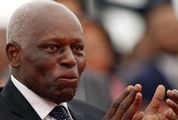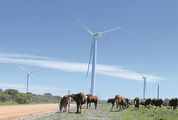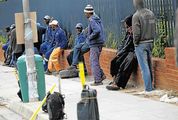Proteas: Why De Kock must stay
by Rob Houwing,
2016-03-12 14:50:52.0
IS THE place of Quinton de Kock, albeit a player hardly out of touch, suddenly the most endangered of SA’s Twenty20 top-order batting specialists?
The Proteas have an ongoing, hotly-debated issue in their camp over whether – though many critics consider it a no-brainer – they feel they can accommodate all of De Kock, captain Faf du Plessis, AB de Villiers and Hashim Amla in the same XI at the game’s most condensed level.
It will be continuing to trouble the minds of their brains trust as the national side knuckle down to early preparation in India for their role in the ICC World Twenty, already underway in its qualifying phase for minnow nations.
Some of them feel that the quartet are fighting only for the top three positions, and that different customers must be stationed in the middle order rather than one of these big-name players shifting down to No 4.
That raises the question: if the status quo is doggedly, defiantly stuck to, who is the unlucky man to miss out at the outset (against England next Friday) of SA’s tournament schedule?
The Proteas rested arguably the main stroke-playing ace up their sleeves, De Villiers, for the surrendered final match of the mini-series against Australia at PPC Newlands, but he is expected to return – and most likely to one of the opening berths – at the WT20.
Du Plessis loves operating at No. 3, where he has batted in all but three of his 31 T20 innings for SA and he is also the country’s most consistently prolific performer in this arena, boasting a stellar average of 39.80 – a fraction better even than his ODI average of 39.78 – and strike rate of 135.
Meanwhile Amla, not too long ago expected to be odd man out in the top-three conundrum, has spent the last two personal outings pretty much making himself undroppable, with successive career-best scores at the top of the order of 69 not out against England and then an unusually flamboyant unbeaten 97 against the Aussies in the Cape Town defeat.
So does all this spell bad news for the 23-year-old De Kock, then?
The left-hander has done little wrong of late, and boasts two fluent knocks on the trot of his own – 44 against Australia off 28 balls at the Wanderers and then a particularly quick-fire 25 off 13 at Newlands.
Those hardly shout "drop me", or so you would think.
But De Kock has another string to his bow, and this is his nicely developing wicket-keeping. He is a top-notch gloveman standing back to the seamers even if he is keeping to his ?box-of-tricks’. Unpredictable spinners like Imran Tahir perhaps remains a work in progress.
If you ditch De Kock, it means a recall to the chore behind the stumps for De Villiers, who supposedly is more prepared to keep wicket at T20 level than in the other two major formats for the Proteas.
But by asking the near-veteran to perform that task, you also rob the national team of one of its speediest and most mercurial outfielders; he and former schoolmate Du Plessis are priceless setters of standards in that regard, even if the Proteas have a few other good ‘uns in that department.
A personal belief is that De Kock must keep his place, and also take care of the wicket-keeping.
And yes, if that means room simply must be found in the team for all four upfront batting aces, you won’t hear any objections from this corner.
Here’s an extra thought: if the more senior Amla, De Villiers and Du Plessis are steadfast in their wishes to be in the top three – Amla’s style is surely suited only to opening – what price the talented, naturally attacking De Kock making a decent fist of No 4, if it has to come to that?
He has occupied that berth once in T20 internationals, and it was on his (winning) debut against New Zealand at Kingsmead in December 2012: he made a boundary-studded 28 not out off 23 deliveries, just for the record …
Sport24

Quinton de Kock. Picture: GALLO IMAGES / LEE WARREN
IS THE place of Quinton de Kock, albeit a player hardly out of touch, suddenly the most endangered of SA’s Twenty20 top-order batting specialists?
The Proteas have an ongoing, hotly-debated issue in their camp over whether – though many critics consider it a no-brainer – they feel they can accommodate all of De Kock, captain Faf du Plessis, AB de Villiers and Hashim Amla in the same XI at the game’s most condensed level.
It will be continuing to trouble the minds of their brains trust as the national side knuckle down to early preparation in India for their role in the ICC World Twenty, already underway in its qualifying phase for minnow nations.
Some of them feel that the quartet are fighting only for the top three positions, and that different customers must be stationed in the middle order rather than one of these big-name players shifting down to No 4.
That raises the question: if the status quo is doggedly, defiantly stuck to, who is the unlucky man to miss out at the outset (against England next Friday) of SA’s tournament schedule?
The Proteas rested arguably the main stroke-playing ace up their sleeves, De Villiers, for the surrendered final match of the mini-series against Australia at PPC Newlands, but he is expected to return – and most likely to one of the opening berths – at the WT20.
Du Plessis loves operating at No. 3, where he has batted in all but three of his 31 T20 innings for SA and he is also the country’s most consistently prolific performer in this arena, boasting a stellar average of 39.80 – a fraction better even than his ODI average of 39.78 – and strike rate of 135.
Meanwhile Amla, not too long ago expected to be odd man out in the top-three conundrum, has spent the last two personal outings pretty much making himself undroppable, with successive career-best scores at the top of the order of 69 not out against England and then an unusually flamboyant unbeaten 97 against the Aussies in the Cape Town defeat.
So does all this spell bad news for the 23-year-old De Kock, then?
The left-hander has done little wrong of late, and boasts two fluent knocks on the trot of his own – 44 against Australia off 28 balls at the Wanderers and then a particularly quick-fire 25 off 13 at Newlands.
Those hardly shout "drop me", or so you would think.
But De Kock has another string to his bow, and this is his nicely developing wicket-keeping. He is a top-notch gloveman standing back to the seamers even if he is keeping to his ?box-of-tricks’. Unpredictable spinners like Imran Tahir perhaps remains a work in progress.
If you ditch De Kock, it means a recall to the chore behind the stumps for De Villiers, who supposedly is more prepared to keep wicket at T20 level than in the other two major formats for the Proteas.
But by asking the near-veteran to perform that task, you also rob the national team of one of its speediest and most mercurial outfielders; he and former schoolmate Du Plessis are priceless setters of standards in that regard, even if the Proteas have a few other good ‘uns in that department.
A personal belief is that De Kock must keep his place, and also take care of the wicket-keeping.
And yes, if that means room simply must be found in the team for all four upfront batting aces, you won’t hear any objections from this corner.
Here’s an extra thought: if the more senior Amla, De Villiers and Du Plessis are steadfast in their wishes to be in the top three – Amla’s style is surely suited only to opening – what price the talented, naturally attacking De Kock making a decent fist of No 4, if it has to come to that?
He has occupied that berth once in T20 internationals, and it was on his (winning) debut against New Zealand at Kingsmead in December 2012: he made a boundary-studded 28 not out off 23 deliveries, just for the record …
Sport24





















Change: 0.40%
Change: 0.47%
Change: -0.49%
Change: 0.53%
Change: 1.03%
Data supplied by Profile Data
Change: 1.71%
Change: 1.28%
Change: 0.40%
Change: 0.00%
Change: 1.64%
Data supplied by Profile Data
Change: 0.11%
Change: 0.14%
Change: 0.25%
Change: 0.00%
Change: 0.35%
Data supplied by Profile Data
Change: 0.38%
Change: 0.21%
Change: 0.32%
Change: -0.17%
Change: -0.20%
Data supplied by Profile Data